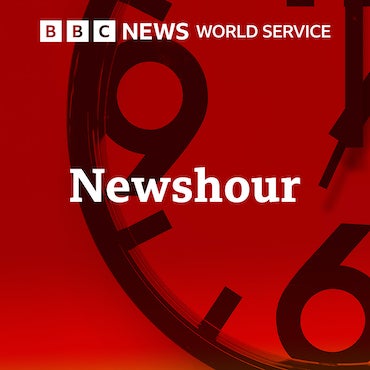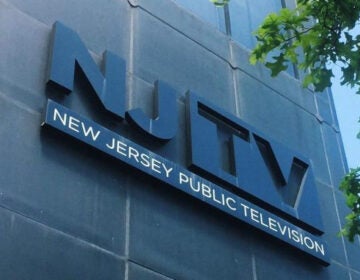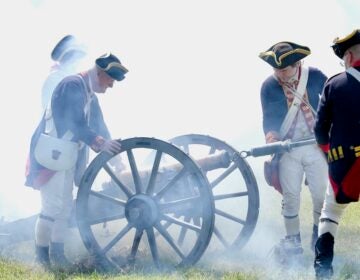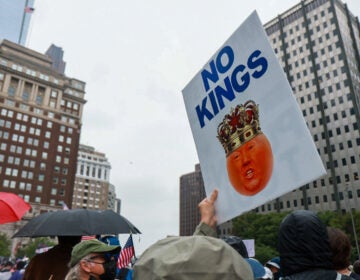Monument project in New Jersey seeks to reframe narrative about migrants and labor amid political rhetoric and debates
The project will see a monument in each of the state’s three regions tell stories of migrants' roles in the Garden State labor force.
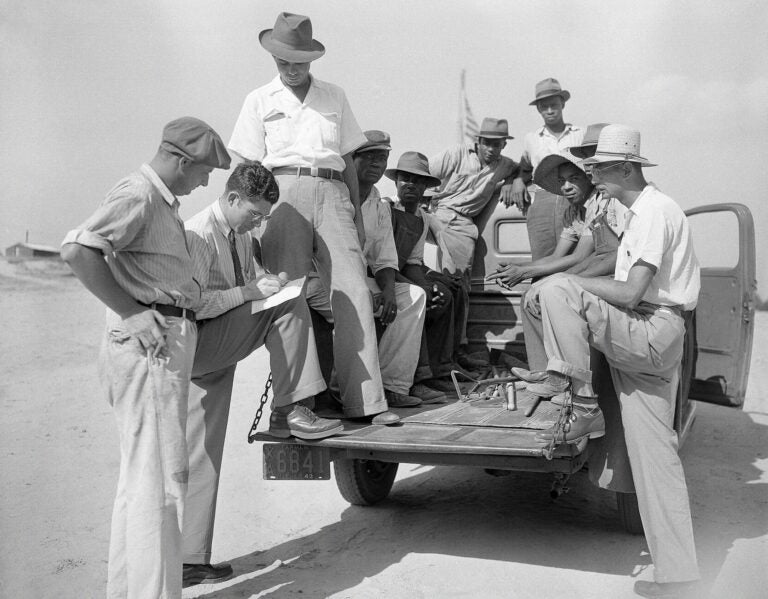
Workers from Jamaica and the Bahamas have been allotted to a number of states of help out with farm production. The number has been set at an ultimate 15,000, but increasing demands may raise that figure. Checking in at the end of a day’s work, from left to right are H.C. Gibson, Woodstown, N.J., farm helpers Donald Swanson, FSA camp supervisor, calculate the workers’ time, aided by J.R. Nay, Jamaican supervisor (extreme right) as other workers look on in Swedesboro, N.J., June 21, 1943. (AP Photo)
From Camden and Cherry Hill to Trenton and the Jersey Shore, what about life in New Jersey do you want WHYY News to cover? Let us know.
The New Jersey Monuments to Migration and Labor project aims to preserve the stories of immigrants and migrants who come to the Garden State for work.
Andrew Urban, project director and an associate professor of American studies and history at Rutgers University, said that although the project is focused on workers, his group is trying to go beyond labor and humanize immigrants.
“I think we can acknowledge that often we hear about immigrants as either targets of raids and deportation or, in even more negative contexts, about criminals and public safety threats,” Urban said. “This project is really trying to push back against that.”
The project is supported by Rutgers and the Mellon Foundation’s Monuments Project. Mellon has given several grants to projects that explore the intersection of labor, race and public memory, including $1.3 million to the National Center for Civil and Human Rights in Atlanta and $1.5 million to the West Virginia Mine Wars Museum.
The monuments are being designed based on feedback from community members and others with ties to the region. They will be permanently installed in Paterson and New Brunswick.
One of the focuses of the Paterson monument will be the city’s long history of Arab immigrants that dates to the late 19th century. The artist for the monument, Michelle Angela Ortiz, has been working with other groups, including the New Jersey Domestic Worker Coalition and Filipino American groups in Jersey City, to incorporate their stories.
The New Brunswick monument will focus on the histories and experiences of Mexican immigrants, as well as other immigrants from Central and South America. It will also emphasize Latino activism in the city and fights against immigrant exploitation, such as wage theft.
South Jersey’s monument, the project’s only mobile monument, will recognize African American migration to the region, as well as Japanese Americans who were recruited from World War II internment camps to work at Seabrook Farms in Bridgeton. It will also include recent immigrants from India, Taiwan and Haiti, among other places.
New York–based artist Immanuel Oni is behind the South Jersey monument. The “space doula,” who helps people declutter and clear emotional or energetic patterns in an environment, says much of his work is rooted in bringing people together.
“For me, art making is not about what I’m making, it’s about who I’m making it for,” he said.
Oni praised the organizers of the project for hosting “a lot” of the community dialogue to build “a very solid foundation” of engagement.
“I found that their approach was very robust and that they did a lot of the heavy lifting because that’s something that I usually do from the ground up,” Oni added.
Betty Brown-Pitts, of Vineland, participated in the feedback sessions. Her father moved from Alabama to New Jersey in 1945 to work at Seabrook Farms, and her mother followed about seven years later.
When the monument is built, Brown-Pitts hopes people will be proud that their story will be preserved.
“I think it’s very important to preserve these stories and our contributions that my family and other African Americans made to Seabrook Farms,” she said.
During a second set of meetings in January, each artist will present their initial designs to stakeholders.
“They’ll bring those materials and sketches and activities that hopefully will allow them to get additional input,” Urban said.
There will be a third set of meetings where stakeholders will sign off on the final designs.
Fabrication is expected to take place from the end of March until the start of summer. Urban said that once the monuments have their formal debut, a series of “activation programming” will follow.
“We’re going to try to bring community members back out to gather at the completed monument installations and use it as another opportunity to reflect more on migration and labor and other histories from different communities that we might harvest in the future,” Urban said.

Get daily updates from WHYY News!
WHYY is your source for fact-based, in-depth journalism and information. As a nonprofit organization, we rely on financial support from readers like you. Please give today.

